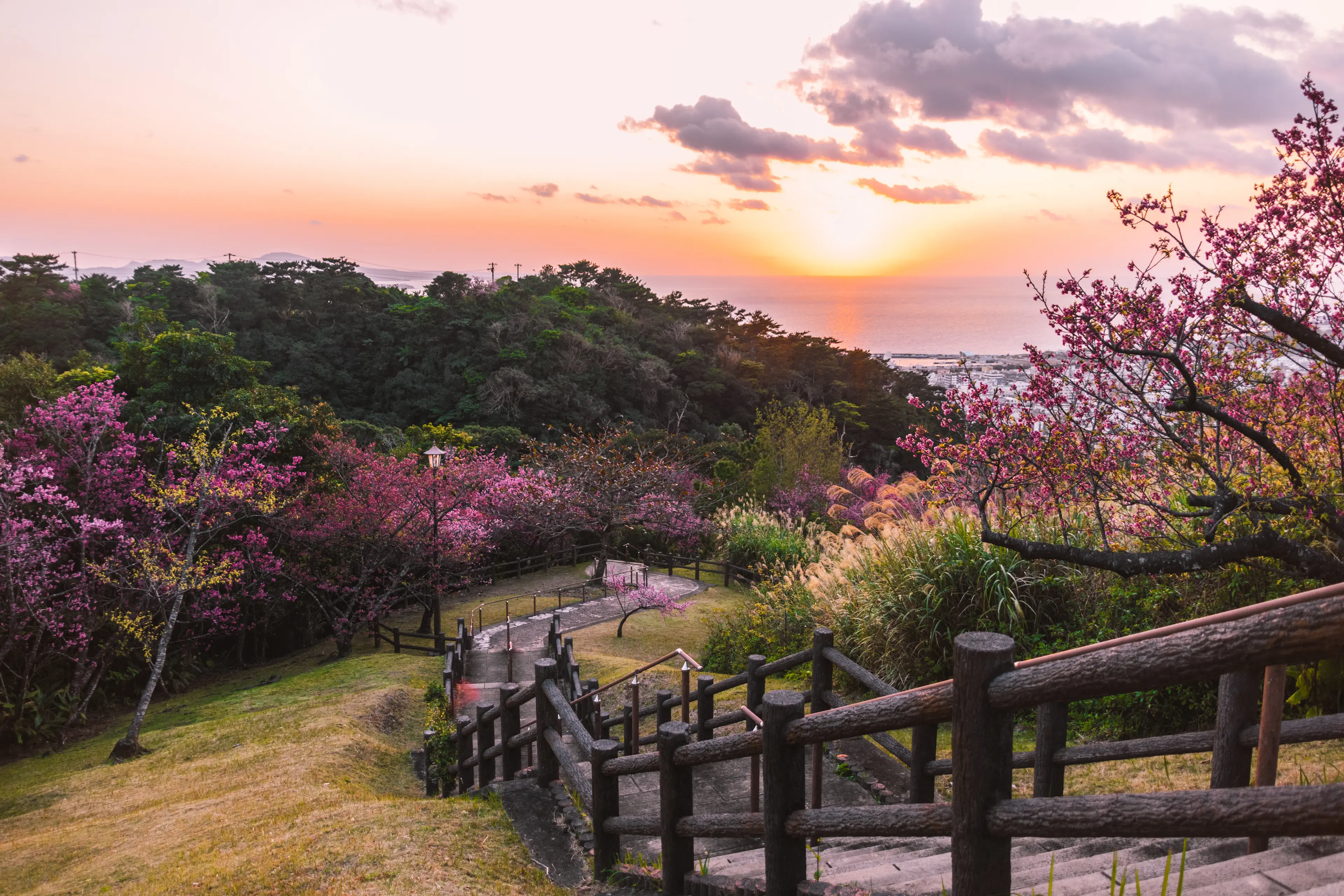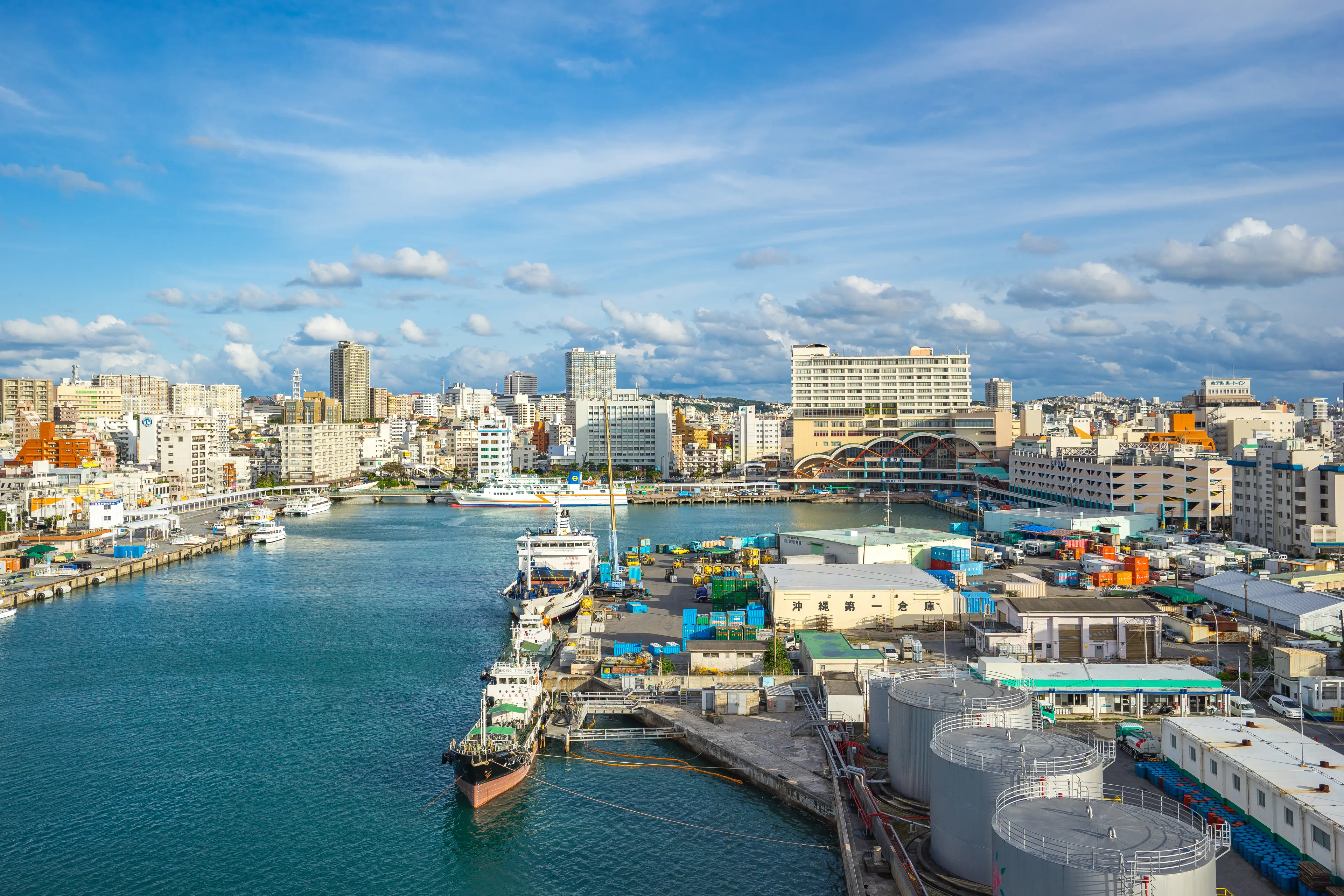Solo 5-Day Local Experience: Food, Wine, Shopping in Okinawa
Okinawa, Japan
5 days
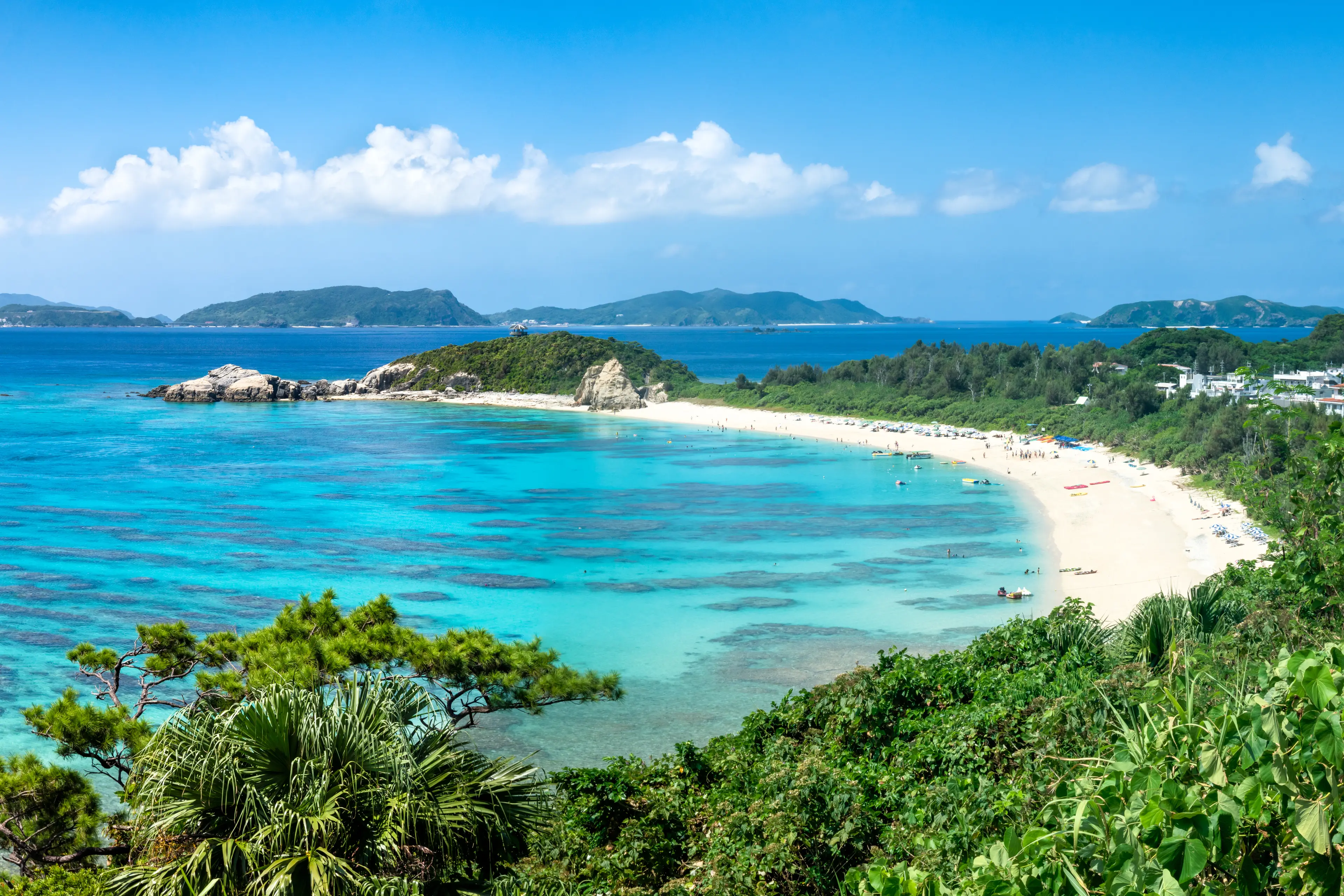

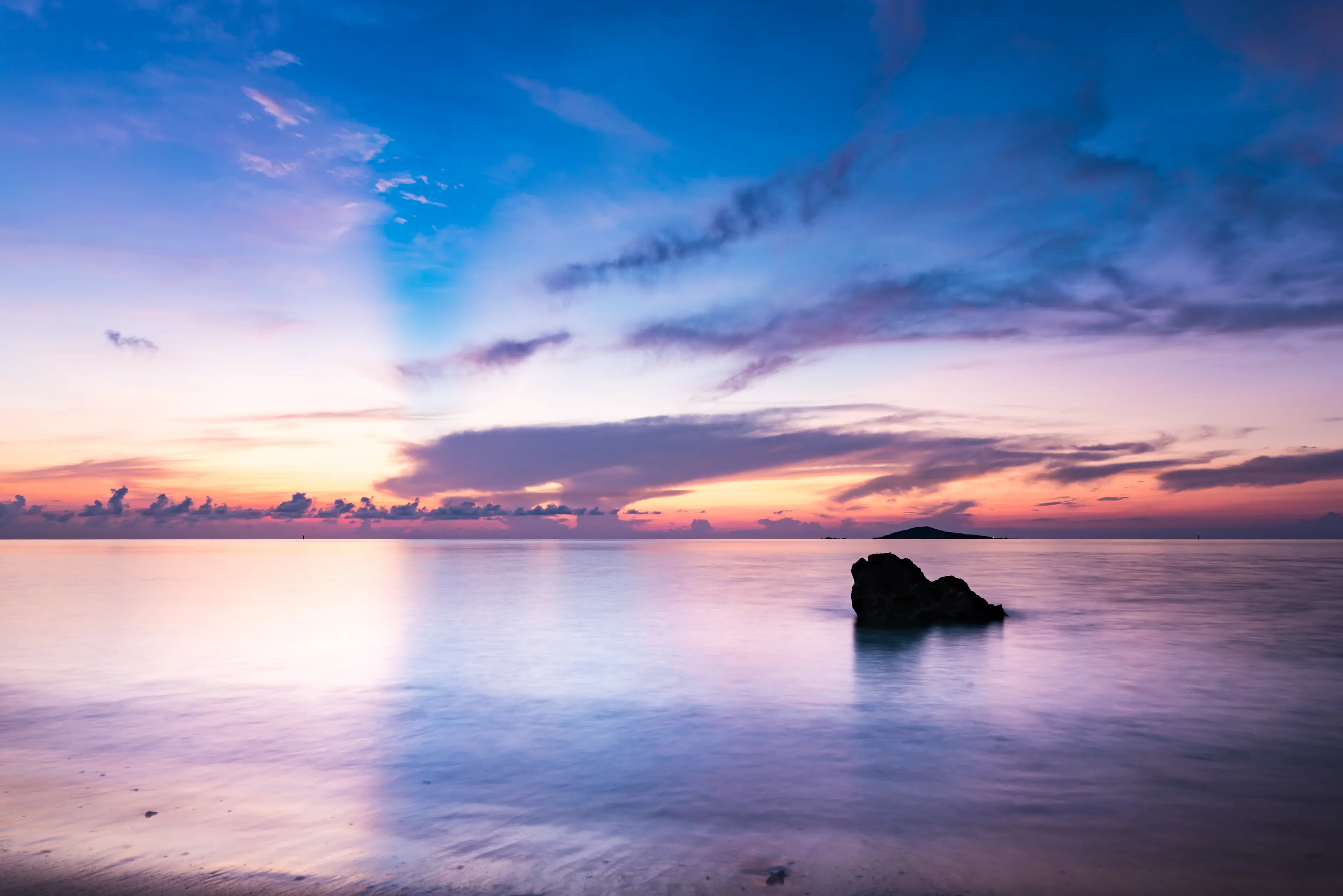
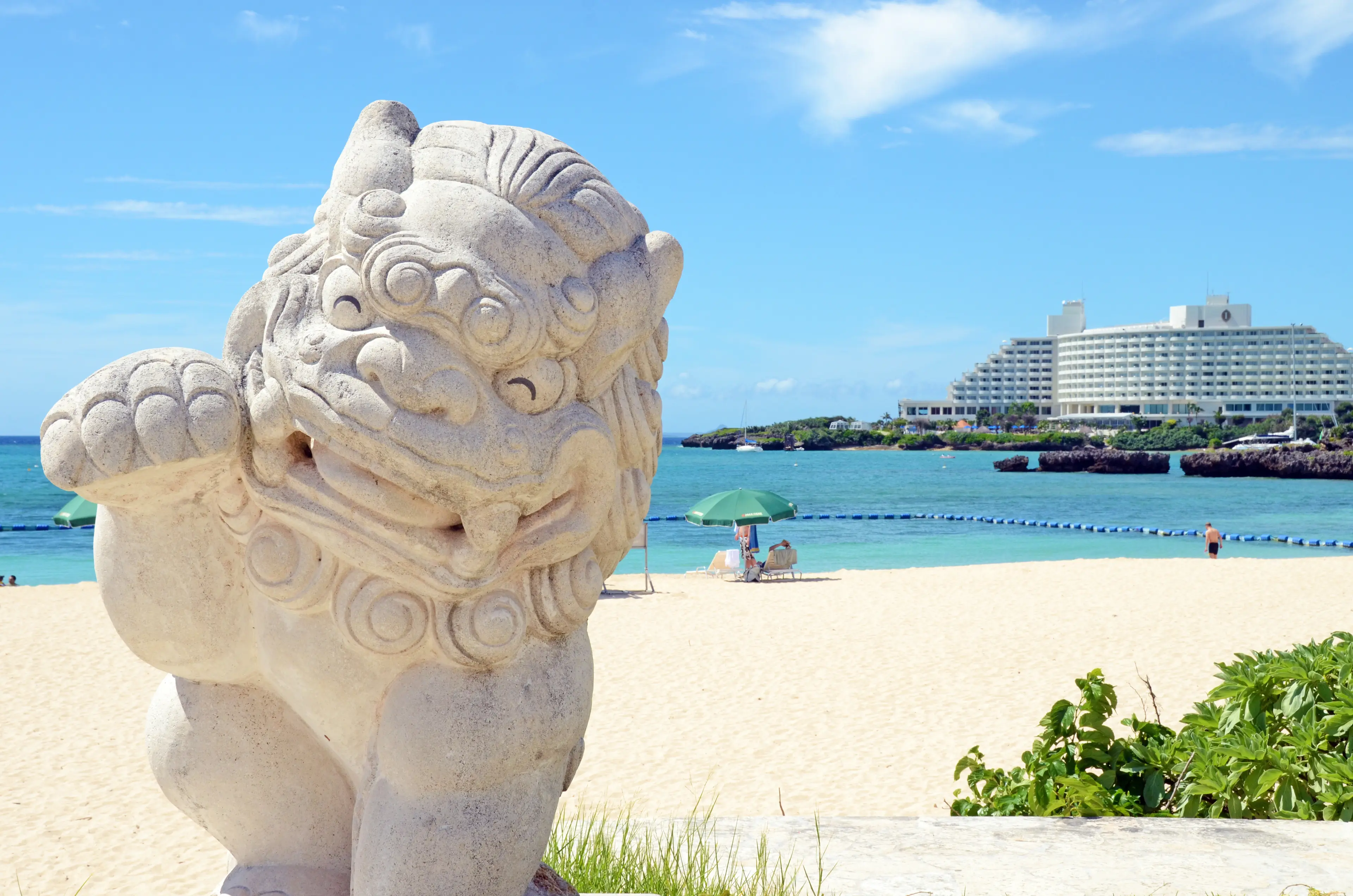
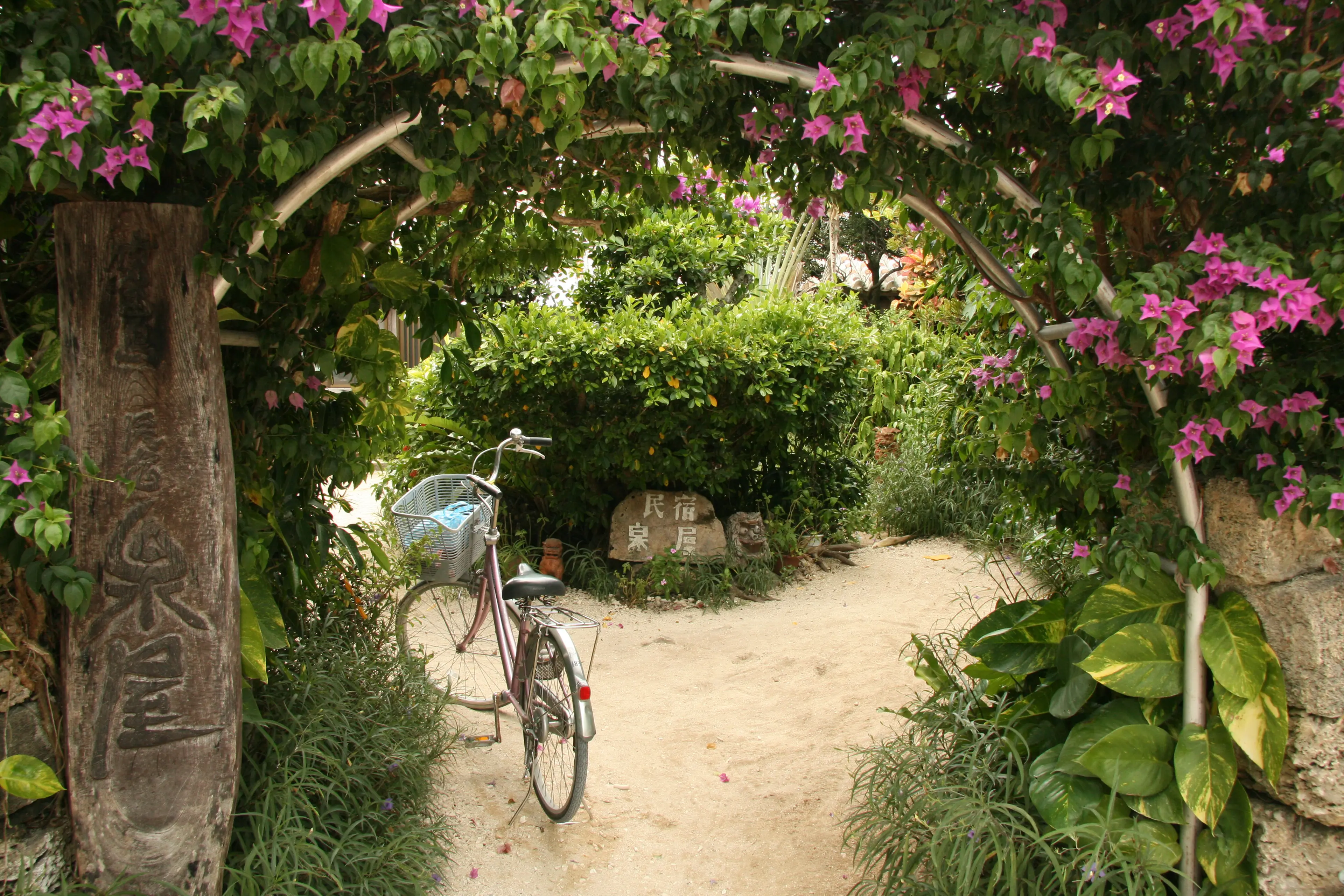
About Okinawa, Japan
Discover the tropical paradise of Okinawa, Japan, a unique blend of stunning natural beauty, rich culture, and historical significance. Okinawa, the southernmost prefecture of Japan, is a chain of islands boasting pristine beaches, crystal-clear waters, and a vibrant coral reef, perfect for snorkeling and diving enthusiasts. Experience the Ryukyuan culture through traditional music, dance, and crafts, and savor the unique Okinawan cuisine, known for its health benefits. Visit the World Heritage sites like Shuri Castle, and pay respects at the Peace Memorial Park, a poignant reminder of WWII. Okinawa's subtropical climate makes it a year-round destination. Whether you're seeking relaxation, adventure, or cultural immersion, Okinawa offers an unforgettable journey.
5-Day Itinerary
Day 2
Marine Life, Beach, and Beer in Motobu
Morning
Begin your day with a visit to the Okinawa Churaumi Aquarium, one of the largest aquariums in the world. It's home to a wide variety of marine life, including whale sharks and manta rays.
Lunch
Have lunch at a local restaurant and try the Goya Champuru, a traditional Okinawan stir-fry dish made with bitter melon, tofu, and eggs.
Afternoon
Spend the afternoon exploring the beautiful Emerald Beach, known for its clear turquoise waters and white sandy beach. It's a perfect spot for swimming, sunbathing, or simply relaxing.
Dinner
Enjoy a beachside barbecue dinner. Grilled seafood and meat, paired with local Okinawan beer, make for a perfect beach dining experience.
Evening
End your day with a visit to the Orion Happy Park, where you can learn about the brewing process of Orion Beer, a popular Okinawan beer, and enjoy a tasting session.
Day 3
Cultural Immersion and Scenic Views in Onna
Morning
Start your day with a visit to the Ryukyu Mura, a traditional Okinawan village. Here, you can learn about the local culture, participate in craft workshops, and watch traditional performances.
Lunch
Have lunch at a local restaurant and try the Rafute, a traditional Okinawan braised pork belly dish.
Afternoon
Spend your afternoon exploring the Cape Manzamo, a scenic spot known for its unique cliff formations. It's a great spot for photography and enjoying the beautiful sea views.
Dinner
For dinner, enjoy a traditional Okinawan multi-course meal, known as Kaiseki, at a local restaurant.
Evening
End your day with a leisurely stroll along the Onna Village, a charming coastal village known for its beautiful beaches and crystal-clear waters.
Day 4
Cave, Sacred Site, and Shopping in Nanjo
Morning
Begin your day with a visit to the Okinawa World, a theme park showcasing Okinawan culture. Explore the Gyokusendo Cave, watch traditional performances, and visit the Habu Museum.
Lunch
Have lunch at a local restaurant and try the Soki Soba, a traditional Okinawan noodle dish made with pork spare ribs.
Afternoon
Spend your afternoon exploring the Sefa Utaki, a sacred site considered to be one of the most important spiritual places in Okinawa. It offers stunning views of the surrounding landscape.
Dinner
Enjoy a traditional Okinawan dinner at a local restaurant. Try the Mozuku Seaweed, a local delicacy often served with vinegar.
Evening
End your day with a visit to the Ashibinaa Outlet Mall, where you can shop for international brands at discounted prices.
Day 5
Memorials, Museum, and Beach in Itoman
Morning
Start your day with a visit to the Peace Memorial Park, a memorial dedicated to the victims of the Battle of Okinawa during World War II. It's a place of reflection and remembrance.
Lunch
Have lunch at a local restaurant and try the Hirayachi, a traditional Okinawan pancake-like dish.
Afternoon
Spend your afternoon exploring the Himeyuri Monument and the Himeyuri Peace Museum, dedicated to the memory of the Himeyuri Student Corps who lost their lives during the Battle of Okinawa.
Dinner
For your final dinner, enjoy a traditional Okinawan feast at a local restaurant. Try the Agu Pork, a local breed of pig known for its tender and flavorful meat.
Evening
End your trip with a leisurely stroll along the Itoman Sunset Beach, a beautiful beach known for its stunning sunsets. It's a perfect way to bid farewell to Okinawa.
Attractions in Itinerary (16)

1Shuri Castle
A Ryukyuan gusuku in Shuri, Okinawa. Between 1429 and 1879, it was the palace of the Ryukyu Kingdom.

2Kokusai Street
Known as 'International Street', it's a bustling hub with a variety of shops, restaurants, and bars.

3Okinawa Churaumi Aquarium
One of the largest aquariums in the world, featuring a wide variety of marine life including whale sharks and manta rays.

4Emerald Beach
A beautiful beach located within the Ocean Expo Park, known for its clear, emerald-green waters.
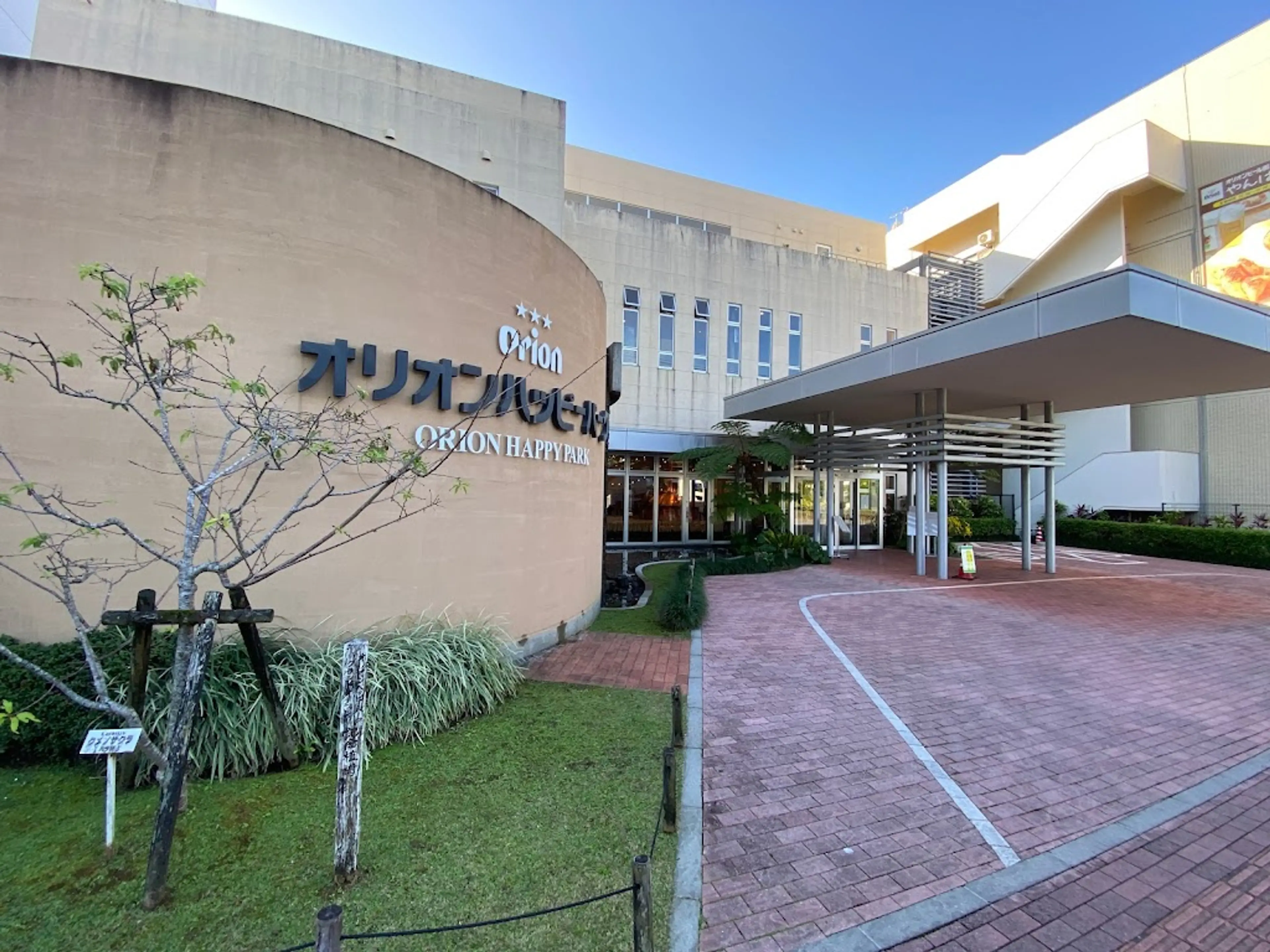
5Orion Happy Park
A park that offers a variety of attractions including a brewery tour and beer tasting.

6Ryukyu Mura
A traditional Ryukyuan village showcasing the culture and lifestyle of the Ryukyu Kingdom.

7Cape Manzamo
A scenic rock formation on the coast, known for its elephant trunk-like shape.

8Okinawa World
A theme park showcasing Okinawan culture, including a recreated traditional village, a snake museum, and a limestone cave.

9Gyokusendo Cave
Okinawa's largest cave that offers a unique underground experience.
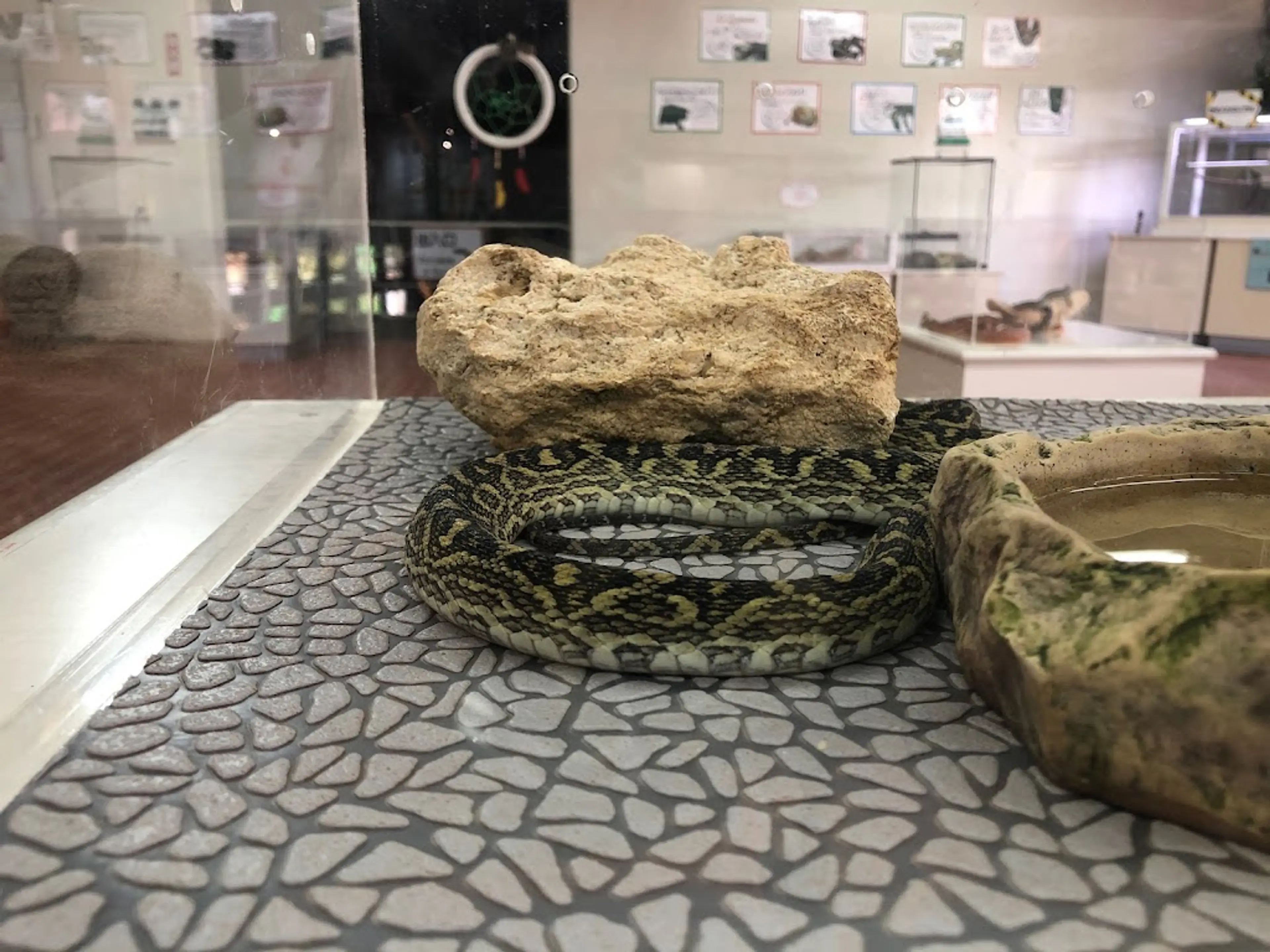
10Habu Museum
A museum dedicated to the habu snake, featuring live exhibits and educational displays.

11Sefa Utaki
A sacred site in the Okinawan religion, known for its spiritual and historical significance.
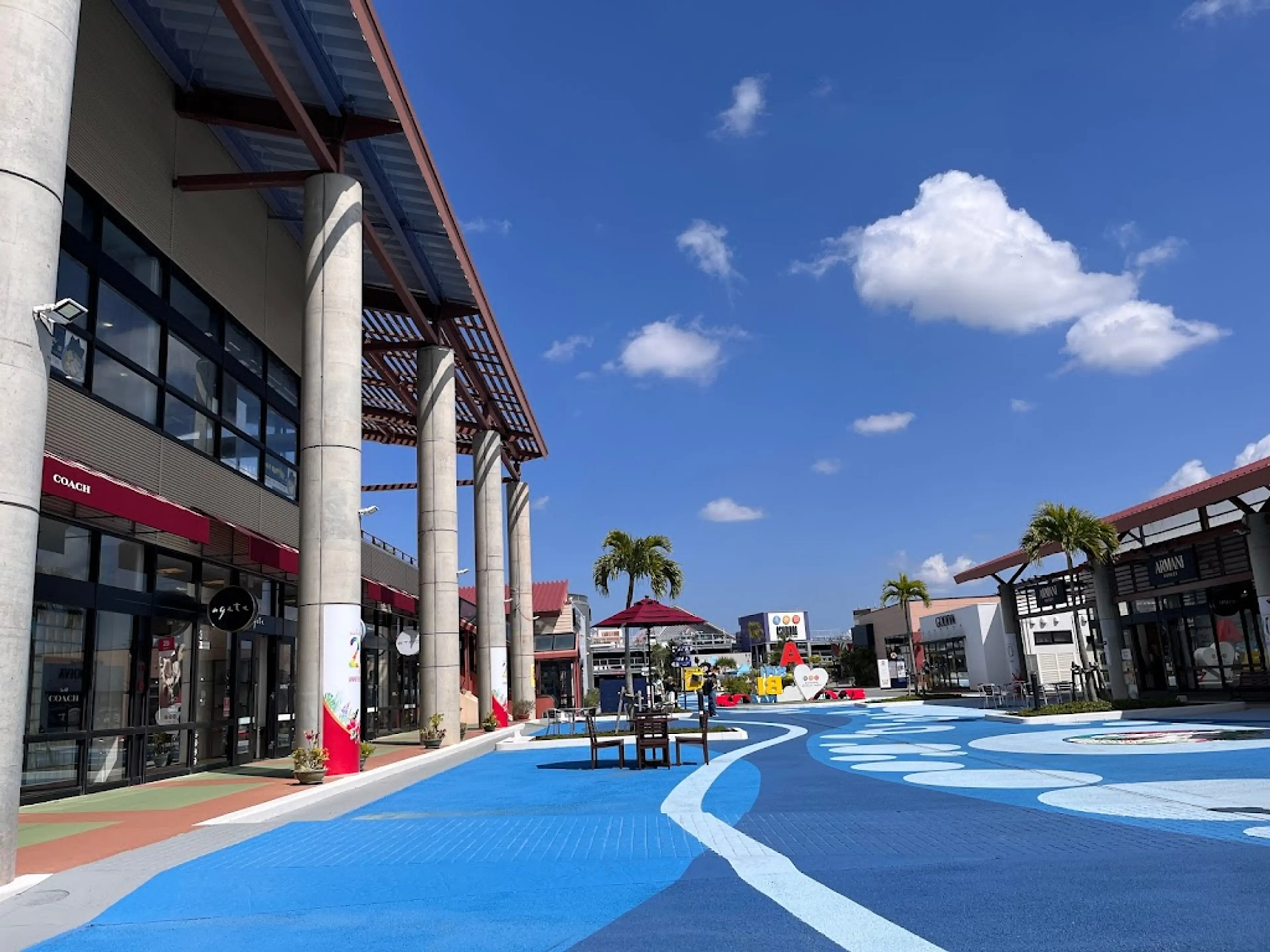
12Ashibinaa Outlet Mall
Okinawa's first ever outlet mall, featuring a variety of international and Japanese brands.

13Peace Memorial Park
A park dedicated to the memory of those who lost their lives in the Battle of Okinawa during World War II.

14Himeyuri Monument
A monument dedicated to the Himeyuri students who perished during the Battle of Okinawa.

15Himeyuri Peace Museum
A museum dedicated to the Himeyuri students, featuring exhibits on their experiences during the Battle of Okinawa.
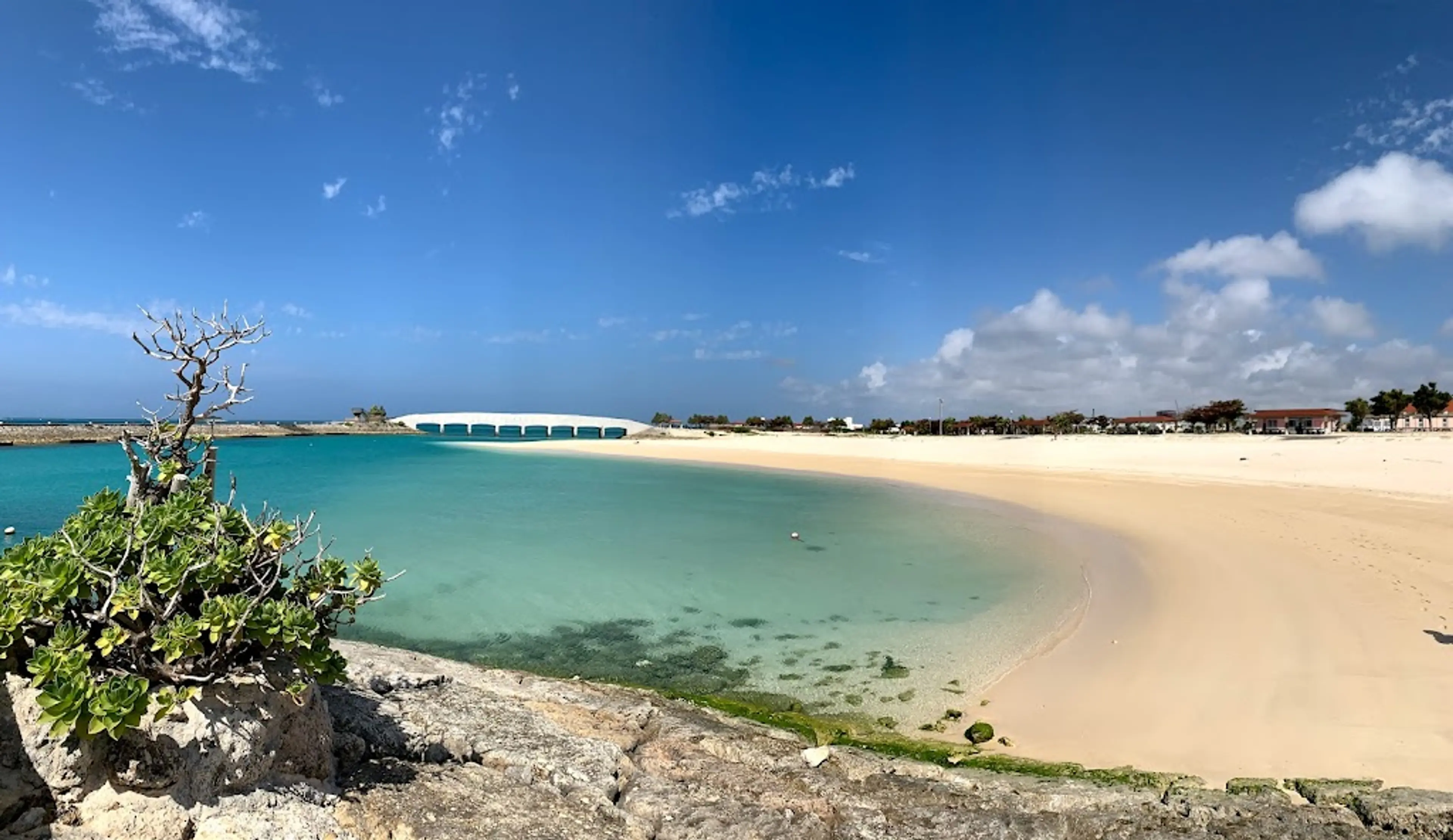
16Itoman Sunset Beach
A beautiful beach known for its stunning sunsets and clear waters.
Local Food and Drinks (12)

Goya Champuru
A popular Okinawan stir-fry dish made with bitter melon (goya), tofu, eggs, and pork. It's a staple in Okinawan cuisine and a must-try for its unique flavor.

Sata Andagi
These are Okinawan sweet deep-fried doughnuts. They are crispy on the outside and soft and sweet on the inside. A popular treat in Okinawa.

Okinawa Soba
A noodle soup dish that is a staple in Okinawa. It's made with wheat noodles, pork, and a savory broth.

Mimiga
This is a traditional Okinawan dish made from pig's ears. They are typically boiled, sliced thin, and served with a peanut sauce.

Rafute
A classic Okinawan dish made from pork belly that's been slow-cooked in soy sauce, sugar, and awamori (Okinawan liquor).

Awamori
A traditional Okinawan alcoholic beverage made from rice. It's often served straight, on the rocks, or with water.

Orion Beer
A popular local beer in Okinawa. It's light, crisp, and refreshing, making it a perfect drink for the tropical climate of Okinawa.

Taco Rice
A fusion dish popular in Okinawa that combines elements of Mexican and Japanese cuisine. It consists of taco-flavored ground beef served over rice.

Umibudo
Also known as sea grapes or green caviar, this is a type of seaweed that's popular in Okinawa. It's often served with a dipping sauce as an appetizer.

Shikuwasa Juice
A refreshing beverage made from shikuwasa, a citrus fruit native to Okinawa. It's tart and sweet, similar to a lime or lemonade.

Mozuku Seaweed
A type of seaweed that's popular in Okinawa. It's often served in a vinegar dressing as an appetizer.

Beni Imo Tart
A dessert made from beni imo, a purple sweet potato that's native to Okinawa. The tart is sweet and creamy, with a distinct purple color.
Best time to visit
The best time to visit Okakina, Japan is typically from late March to early May when the weather is mild and the island's iconic cherry blossoms are in bloom. Another great time is from October to November when the weather is comfortable and the autumn foliage is beautiful. However, if you're interested in diving or beach activities, the summer months from June to September offer warm sea temperatures, despite being Okinawa's rainy season.
How to get around
Rental Car
Okinawa's public transportation is not as developed as in other parts of Japan, so renting a car is a popular option for tourists. It provides the flexibility to explore the island at your own pace. International driving permits are required for foreign drivers.
Bus
There are bus services that cover Okinawa Main Island and some of the smaller islands. The Okinawa Bus is the main operator on the main island, with routes connecting Naha with other cities. The buses are reliable but can be infrequent in rural areas.
Monorail
The Okinawa Monorail, also known as Yui Rail, operates in Naha, the capital city of Okinawa. It runs from Naha Airport to the city center, making stops at key attractions like Shuri Castle and Kokusai Street.
Taxi
Taxis are readily available in Okinawa, especially in Naha and other urban areas. They can be hailed on the street, found at taxi ranks, or booked in advance. Taxis are metered and can be a convenient option for short distances.
Ridesharing
Ridesharing services like Uber are not widely available in Okinawa. However, there are local apps like JapanTaxi that operate similarly, allowing you to book a taxi from your smartphone.
Ferry
Ferries are a common way to travel between the islands of the Okinawa archipelago. There are regular services from Naha to the Kerama Islands, Miyako Island, and Ishigaki Island, among others.
Bicycle
Cycling is a popular way to get around in Okinawa, especially on the smaller islands. Many places offer bicycle rentals. However, be aware that Okinawa is hilly and can be hot, so this option may be physically demanding.
Foot
Walking is a viable option in the more compact areas of Okinawa, such as Naha city center. Many of the main attractions, shops, and restaurants are within walking distance of each other.
Important information
Currency¥ JPY
Time zoneUTC+9
Driving sideLeft
Emergency phoneAmbulance: 119; Fire: 119; Police: 110
Drinking waterYes
Power sockets
Voltage100 V
Things to know about Okinawa, Japan as a first time visitor
1
Okinawa has a subtropical climate, meaning it is generally warm and humid throughout the year. Summers can be hot, with temperatures reaching up to 89°F (32°C), while winters are mild, with temperatures rarely dropping below 59°F (15°C).
2
The official language is Japanese, but the local dialect, Uchinaguchi, is also spoken. English is not widely spoken, so it may be helpful to learn some basic Japanese phrases.
3
The currency used in Okinawa is the Japanese Yen (JPY). Credit cards are accepted in most places, but it's always a good idea to carry some cash for smaller establishments or street vendors.
4
Okinawa is known for its unique Ryukyuan culture, which is distinct from mainland Japan. This includes traditional music, dance, and crafts.
5
Okinawa's cuisine is unique and heavily influenced by its history and geography. Don't miss trying local specialties like goya champuru (bitter melon stir-fry), Okinawa soba, and awamori (local liquor).
6
Okinawa follows Japan Standard Time (JST), which is 9 hours ahead of Coordinated Universal Time (UTC+9).
7
Public transportation in Okinawa is reliable but not extensive. Renting a car is the most convenient way to get around, especially if you plan to visit more remote areas.
8
Driving is on the left side of the road, and an international driving permit is required for foreign drivers.
9
Okinawa is known for its beautiful beaches and clear waters, making it a popular destination for snorkeling and diving. Remember to respect the marine life and avoid touching or disturbing the coral reefs.
10
Typhoon season in Okinawa runs from June to November. Be sure to check the weather forecast and plan accordingly.
11
Okinawa has a slower pace of life compared to mainland Japan. Embrace the local philosophy of 'nuchi du takara' (life is a treasure) and take the time to relax and enjoy your surroundings.
12
Tipping is not customary in Japan, including Okinawa. Good service is expected and is included in the price.
13
Okinawa has a rich history, particularly related to World War II. It's important to be respectful when visiting war memorials and historical sites.
14
Okinawa is home to many unique species of flora and fauna. Be respectful of the wildlife and avoid feeding or disturbing animals.
15
The Okinawan people are known for their longevity, with one of the highest rates of centenarians in the world. This is often attributed to their healthy diet and active lifestyle.
16
Okinawa has a unique tradition of pottery called 'yachimun'. You can visit pottery villages and even try your hand at making your own.
17
The traditional Okinawan garment is the 'bingata', a brightly colored fabric with unique patterns. It's a popular souvenir and can be found in many local shops.
18
Okinawa has a strong tradition of martial arts, being the birthplace of karate. You may have the opportunity to watch or even participate in a karate class.
19
Okinawa has a unique form of traditional music called 'sanshin'. It's worth seeking out a live performance during your visit.
20
Okinawa has a number of traditional festivals and events throughout the year. If your visit coincides with one, it's a great opportunity to experience local culture.
Basic Japanese to know as a first time visitor
English phrase | Native phrase | Pronunciation | When to use it |
|---|---|---|---|
Hello | こんにちは | Konnichiwa | Greeting someone |
Goodbye | さようなら | Sayonara | Leaving or saying goodbye |
Thank you | ありがとう | Arigatou | Showing appreciation |
Please | お願いします | Onegaishimasu | Making a request |
Yes | はい | Hai | Answering affirmatively |
No | いいえ | Iie | Answering negatively |
Excuse me | すみません | Sumimasen | Getting attention or apologizing |
I'm sorry | ごめんなさい | Gomen nasai | Apologizing |
Do you speak English? | 英語を話せますか? | Eigo o hanasemasu ka? | Trying to find someone who speaks English |
I don't understand | わかりません | Wakarimasen | When you don't understand what was said |
Where is the bathroom? | トイレはどこですか? | Toire wa doko desu ka? | When you need to find a bathroom |
How much does this cost? | これはいくらですか? | Kore wa ikura desu ka? | When you want to know the price of something |
I would like this | これをください | Kore o kudasai | When you want to order or buy something |
Help | 助けて | Tasukete | When you need assistance |
Good morning | おはようございます | Ohayou gozaimasu | Greeting someone in the morning |
Good night | おやすみなさい | Oyasuminasai | Saying goodnight or going to bed |
Delicious | おいしい | Oishii | Complimenting food |
Cheers | 乾杯 | Kanpai | Making a toast |
Where is...? | ...はどこですか? | ... wa doko desu ka? | Asking for directions |
I'm lost | 迷子です | Maigo desu | When you are lost |
Packing List
Clothing
Underwear (5 pairs)
Socks (5 pairs)
T-shirts (5)
Shorts (2 pairs)
Jeans/Pants (2 pairs)
Sweater or Jacket (1)
Swimwear (1)
Sleepwear (1 set)
Comfortable walking shoes (1 pair)
Sandals/Flip-flops (1 pair)
Hat/Cap (1)
Sunglasses (1 pair)
Toiletries
Toothbrush (1)
Toothpaste (1 small tube)
Deodorant (1)
Razor (1)
Shaving cream (1 small can)
Shampoo/Conditioner (Travel size)
Body wash/Soap (Travel size)
Sunscreen (1)
Lip balm with SPF (1)
Personal hygiene items
Prescription medications
Travel documents and essentials
Passport
Driver's license/ID
Credit and Debit cards
Cash and coins
Travel insurance documents
Hotel and/or car rental reservations
Airline tickets
Emergency contacts and important addresses
Electronics and gadgets
Smartphone
Charger for smartphone
Power bank
Headphones/Earbuds
Camera
Charger for camera
Memory card for camera
Travel adapter/converter
Miscellaneous items
Travel pillow
Earplugs
Eye mask
Snacks
Water bottle
Books or e-books
Travel guide for Okinawa
Phrasebook or language app
First-aid kit
Hand sanitizer
Tissues/Wet wipes
Weather Conditions
Okinawa, Japan, is known for its subtropical climate, which means it experiences warm weather throughout the year. However, it's important to note that the weather can vary significantly depending on the season. During the winter months, from December to February, Okinawa experiences mild weather with average temperatures ranging from 59°F to 68°F (15°C to 20°C). This is a great time to visit if you prefer cooler temperatures. However, it's advisable to bring a light jacket or sweater for the cooler evenings. Spring, from March to May, sees temperatures rise to between 68°F and 82°F (20°C to 28°C). This is a beautiful time to visit as the island is in full bloom. However, it's also the start of the rainy season which typically runs from late May to early June. So, don't forget to pack a raincoat or umbrella. Summer, from June to August, is hot and humid with temperatures often exceeding 89°F (32°C). If you're planning to visit during this time, be prepared for high humidity and occasional tropical storms. It's important to stay hydrated and protect yourself from the sun. Autumn, from September to November, is typhoon season. While the temperatures are comfortable, ranging from 73°F to 86°F (23°C to 30°C), the weather can be unpredictable. If you're planning to visit during this time, it's important to stay updated on the weather forecast and have a flexible itinerary. Regardless of when you visit, it's always a good idea to check the local weather forecast before your trip and pack accordingly. Okinawa is a beautiful destination with a lot to offer, but like any tropical location, the weather can be unpredictable.
| Month | Hi / Lo (°C) | Weather Overview |
|---|---|---|
January | 23° / 15° | January is the coldest month in Okinawa, but it's still relatively mild with occasional rain. |
February | 23° / 15° | February is similar to January, with mild temperatures and occasional rain, making it a good time for indoor activities. |
March | 24° / 16° | March sees a slight increase in temperature, but it's still a bit chilly for beach activities. |
April | 27° / 19° | April is when the weather starts to warm up, making it a good time for outdoor activities. |
May | 30° / 22° | May is warm and sunny, perfect for beach activities and exploring the islands. |
June | 33° / 25° | June is the start of the rainy season, so be prepared for occasional showers. |
July | 36° / 28° | July is hot and humid, with high chances of typhoons, so check the weather forecast regularly. |
August | 36° / 28° | August is also hot and humid, with occasional typhoons, so it's a good time for indoor activities. |
September | 34° / 26° | September is still warm, but the typhoon risk decreases, making it a good time for outdoor activities. |
October | 31° / 23° | October is a great time to visit, with comfortable temperatures and less rainfall. |
November | 28° / 20° | November is slightly cooler, but still warm enough for outdoor activities. |
December | 25° / 17° | December is cooler and drier, making it a good time for sightseeing and exploring the city. |
Did you know?
Places near by Okinawa, Japan

Kagoshima
A city known for its active stratovolcano, Sakurajima, hot springs, and samurai residences.

Fukuoka
A modern city known for ancient temples, beaches, and modern shopping malls.

Kyoto
A city known for its classical Buddhist temples, gardens, imperial palaces, Shinto shrines, and traditional wooden houses.

Osaka
A large port city and commercial center known for its modern architecture, nightlife, and hearty street food.

Tokyo
Japan's bustling capital, known for its neon skyscrapers, historic temples, and pop culture.

Seoul
The capital of South Korea, known for its modern skyscrapers, high-tech subways, and pop culture.

Shanghai
China's biggest city and a global financial hub, known for its skyscrapers, historic buildings, and bustling markets.
